#which is a famous theme in historical paintings
Explore tagged Tumblr posts
Text
It's crazy that no one told me that David painted Andromache Mourning Hector

Resting against the bed Hector's body lies on, are his helmet, sword and belt. Under his feet you see, craved in the wooden frame, a battle scene. On his hair lays the laurel crown of victories. Even in death, Hector shall not escape war.
Look at Astyanax, reaching for his mother's chest, asking for her tender affection, but she's not looking at him. She's looking up, as she points to Hector's body. She asks the gods above "why did you have to do that to him ? Has he not served you well enough?"
And then there's Hector. He doesn't look like a corpse that has been dragged on the ground for days, actually, he barely looks dead at all. The wound on his clavicle is clean from any blood, his skin isn't any whiter than Andromache's, and his expression doesn't show any pain or fear (he looks resigned, that's all.)
Hector, the prince, the warrior, lays in a perfect athletic shape next to his gear. He looks like he's ready to get up and head back to the battlefield anytime now.
Because of her clothing and the lighting, Andromache stands out from the darkness of the scene. The painting tells you don't look at Hector, the symbol of the Trojan war, looks at her, the powerless mother and wife. It's her tragedy before anyone else's.
#i wrote that in an hour i probably missed things#also the message (at least the one i deducted) reminds me of “The Intervention of the Sabine Women”#which is a famous theme in historical paintings#but David decided to represents the women trying to stop the battle between their father&brothers and their husband&sons#i mean that that's not the first time he expresses a desire for peace#some kind of anti war message#the iliad#trojan war#hector of troy#art history#neoclassical#jacques louis david
111 notes
·
View notes
Text
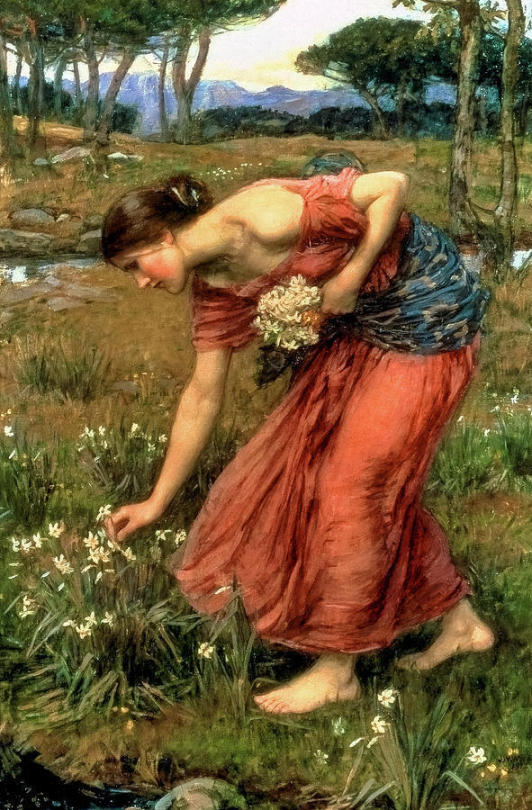
Narcissus
Artist: John William Waterhouse (English, 1849–1917)
Date: 1912
Material: Oil on canvas
Collection: Private collection
Description
John William Waterhouse is very famous for his use of the Pre-Raphaelite style. Most of his pieces express classical mythology, historical subjects, and British poetry. He is known for his great proficiency in oils and watercolors. Narcissus was exhibited at the Royal Academy in 1912.
The exquisite oil painting on canvas displays a woman picking flowers in a field. According to the Greek mythology by Ovid, Narcissus was the son of the river god Cephissus and the nymph Liriope. Narcissus had been promised to live to an old age if only he would not look at his reflection, and so he rejected all women who fell in love with him and would not look at himself. Eventually, he was subdued by Echo, a woman who was deeply hurt by his rejection that she caused the Goddess Nemesis to strike Narcissus that he may look at his reflection in a pool and fall in love with himself. Narcissus then looked at his reflection in the pool till he died.
This story gives origin to the narcissus flower, which grew where Narcissus died. The flower grows almost anywhere but prefers well-drained soil with a sunny or light shade environment. The masterpiece of oil on canvas is set in a beautiful wooded landscape, seemingly with a stream and rocky edges. Wildflowers grow there too, and a young lady is bent picking them. Her countenance is downcast in the flowers. In her other hand, she holds a bunch of already picked flowers. She is dressed in a red dress, perhaps to symbolize love or a burning passion. The flowers she is picking are the narcissus flowers. Waterhouse was always keen to use colours, patterns, and simple objects for symbols of the old mythologies. The Narcissus would be no different. This wonderful work of art brings out his genius with the oils on canvas as he seemingly brings every aspect to life as rich in meaning.
Waterhouse was much influenced and inspired by Greek Mythology and works by Homer, Ovid, Shakespeare, and Keats, among other famous writers and poets from the time. His most common theme from these sources was femme fatale, the woman who ensnares a man. Most of Waterhouse's subjects were women from Greek Mythology, historical or literary texts. Often, he used live models, family, and friends to be his subjects, creating a great mix of the old and new as he used symbolism from the mythologies around current
#painting#narcissus#classic mythology#pre raphaelite style#field#woman#picking flowers#costume#wildflowers#english painter#artwork#fine art#oil on canvas#greek mythology#water stream#trees#mountains#blue horizon#literature#ovid#narcissus flowers#john william waterhouse#english art#20th century painting#european art
371 notes
·
View notes
Text

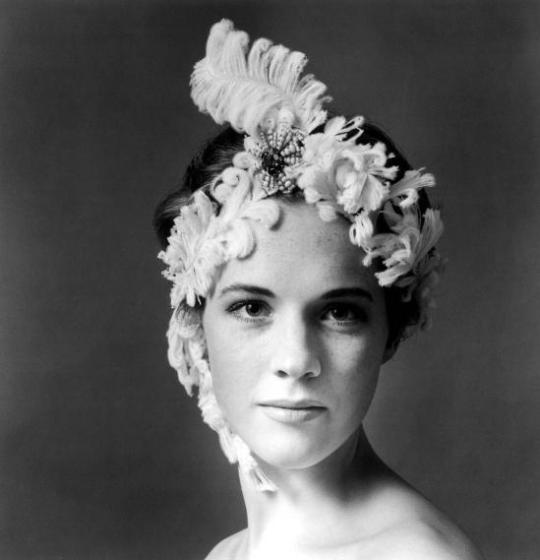
Propaganda
María Félix (Doña Barbara, La Mujer sin Alma, Rio Escondido, La Cucaracha)—Maria Felix is still possibly the most well-known Mexican film actress. She turned down multiple-roles in Hollywood and a contract with Metro-Goldwyn-Meyer in order to take roles in Mexico, France, and Argentine throughout the 1940s, 50s, 60s. She was so famous and so respected as a dramatic actress that she inspired painters, novelists and poets in their own art--she was painted by Diego Rivera, Jose Orozco, Bridget Tichenor. The novelist Carlos Fuentes used her as inspiration for his protagonist in Zona Sagrada. She inspired an entire collection by Hermes. In the late 1960s Cartier made her a custom collection of reptile themed jewels. She considered herself to be powerful challenger of morality and femininity in Mexico & worldwide--she routinely played powerful women in roles with challenging moral choices and free sexuality. But even still, years after he death, she is celebrated with Google Doodles, and appearances in the movie Coco, and holidays for the anniversary of her death.
Julie Andrews (The Sound of Music, Mary Poppins)—Oh where to start .... I'm not sure I even know how. She's just perfection. And it's not fair I can't bring post 70s work into this, because she just gets better and better, and her drag performance in to die for. But in the era I CAN talk about, she shows she has THE RANGE. Beautiful, feisty, funny, holding her own against Christopher Plummer, Paul Newman, Rock Hudson. Oh she's luminous.
This is round 4 of the tournament. All other polls in this bracket can be found here. Please reblog with further support of your beloved hot sexy vintage woman.
[additional propaganda submitted under the cut.]
María Félix:
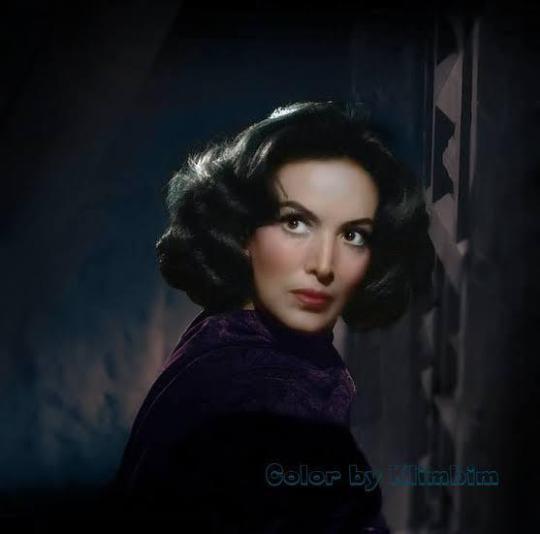
She's Thee Hot Vintage Movie Woman of México. She's absolutely gorgeous and always looks like she's about to step on you. you WILL be thankful if she does.
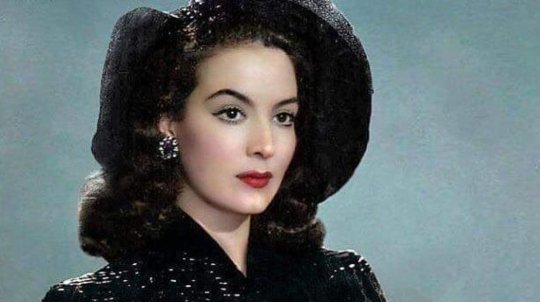
"María Félix is a woman -- such a woman -- with the audacity to defy the ideas machos have constructed of what a woman should be. She's free like the wind, she disperses the clouds, or illuminates them with the lightning flash of her gaze." - Octavio Paz

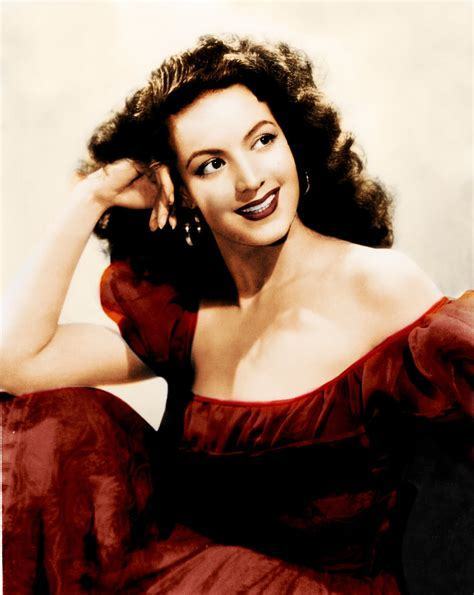
María Félix is one of the most iconic actresses of the Golden Era of Mexican Cinema. La Doña, as she was lovingly nicknamed, only had one son, and when her first marriage ended in divorce her ex-husband stole her only child, so she vowed that one day she’d be more influential than her ex and she’d get her son back. AND SHE DID! María Félix rejected a Hollywood acting role to start her acting career in Mexico on her own terms with El Peñón de las Ánimas (The Rock of Souls) starring alongside actor, and future third husband, Jorge Negrete. She quickly rose to incredible heights both in Mexico and abroad, later on rejecting a Hollywood starring role (Duel in the Sun) as she was already committed to the movie Enamorada at the planned filming time. Of this snubbing she said, quote: “I will never regret saying no to Hollywood, because my career in Europe was focused in [high] quality cinema. [My] india* roles are made in my country, and [my] queen roles are abroad.” (Translator notes: here the “india” role means interpreting a lower-class Mexican woman, usually thought of indigenous/native/mixed descent —which she had interpreted and reinvented throughout her acting career in Mexico— and what abroad was typically considered the Mexican woman stereotype, with the braids, long simple skirts, and sandals. This also references the expectation of her possibly helping Hollywood in perpetuating this stereotype for American audiences that lack the cultural and historical contexts of this type of role which would undermine her own efforts against this type of Mexican stereotypes while working in Europe) She was considered one of the most beautiful women in the world of her time by international magazines like Life, París Match, and Esquire, and was a muse to a vast number of songwriters (including her second husband Agustin Lara,), artists, designers, and writers. Muralist Diego Rivera described her as “a monstrously perfect being. She’s an exemplary being that drives all other human beings to put as much effort as possible to be like her”. Playwriter Jean Cocteau, who worked with her in the Spanish film La Corona Negra (The Black Crown) said the following about her, “María, that woman is so beautiful it hurts”. Haute Couture houses like Dior, Givenchy, Yves Saint Laurent, Balenciaga, Hérmes, among others, designed and dressed her throughout her life. She died on her birthday, April 8, 2002, at 88 years old, in Mexico City. She was celebrated by a parade from her home to the Fine Arts Palace in the the city’s Historic Downtown, where a multitude of people paid tribute to her. Her filmography includes 47 movies from 1942 until 1970, and only two television acting roles in 1970. She has 2 music albums, one recorded with her second husband, Agustín Lara, in 1964 titled La Voz de María y la inspiración de Agustín «The voice of María and the inspiration of Augustín», and her solo album Enamorada «In Love» in 1998. Her bespoke Cartier jewelry is exhibited alongside Elizabeth Taylor’s, Grace Kelly’s and Gloria Swanson’s. In 2018, Film Director Martin Scorsese presented a restored and remastered version of her film Enamorada in the Cannes Classics section of the Cannes Festival and Google dedicated a doodle for her 104th birthday. On august 2023 Barbie added her doll to the Tribute Collection.

Julie Andrews propaganda:

"She has such a simple but amazing beauty to her. Not to mention her amazing and melodic singing voice!"
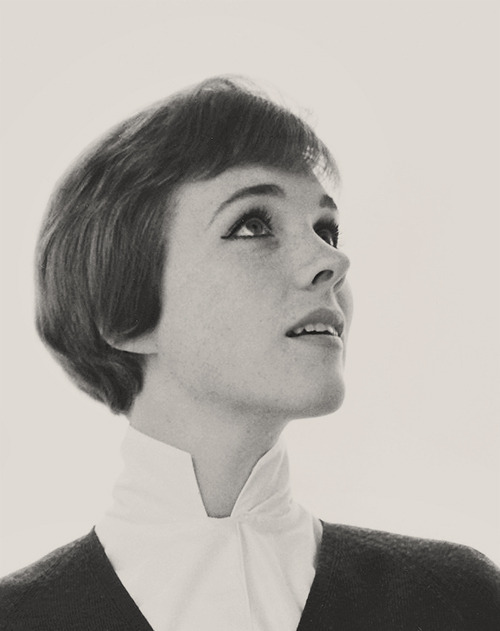
"Roles like nannies and governesses can make us forget how attractive she was! A perfect combination of elegant and adorable, with the most incredible vocal range to boot!"
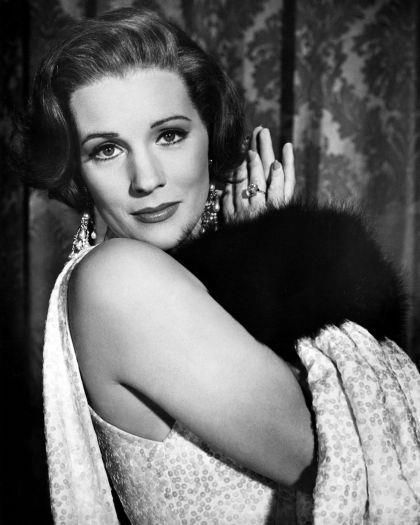
"Besides having one of the most amazing singing voices ever to grace the silver screen, Julie always had an understated beauty to her that wasn't always shown off on screen. But it's there nonetheless because her characters managed to pull some of the hottest men ever to grace the screen."
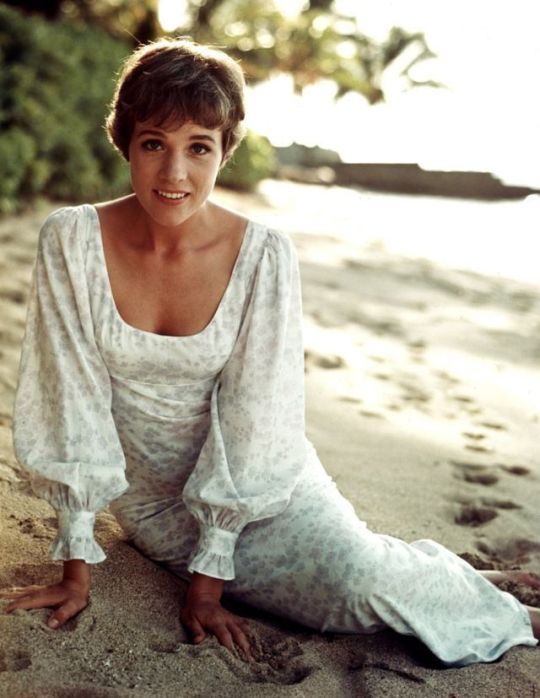
"The juxtaposition between carefree Maria and stern but fun Mary Poppins shows the power of the acting of this HOT VINTAGE MOVIE WOMAN"

"Charming, genteel, incredibly charismatic, beautiful, and has an angelic singing voice to boot. Her screen roles as Maria in The Sound of Music and Mary Poppins are absolutely iconic for a reason and she originated several well-known Broadway roles before those."

"the most beautiful woman 12 year old me had ever seen possibly"
"OMG OMG OMG she’s definitely been submitted before how could she NOT but!!!! I loveeee her so muchhhh rahhhh prebby!!!! cool!!!! mary poppins the beloved <33333 some people dislike it but I love jolly holiday so much because it IS a jolly holiday with Mary!!! no wonder that it’s Mary that we love!!!!!"
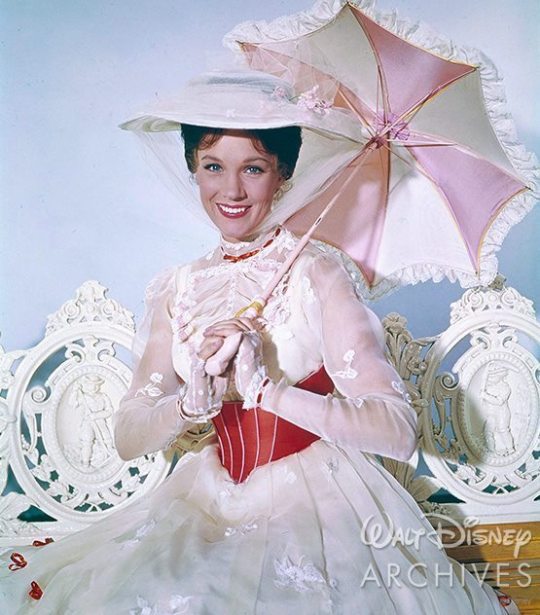
"I know many people who were taught in singing lessons "when in doubt, pronounce words how julie andrews would pronounce them." THATS CALLED INFLUENCE. THATS CALLED MOTHERING THOUSANDS."
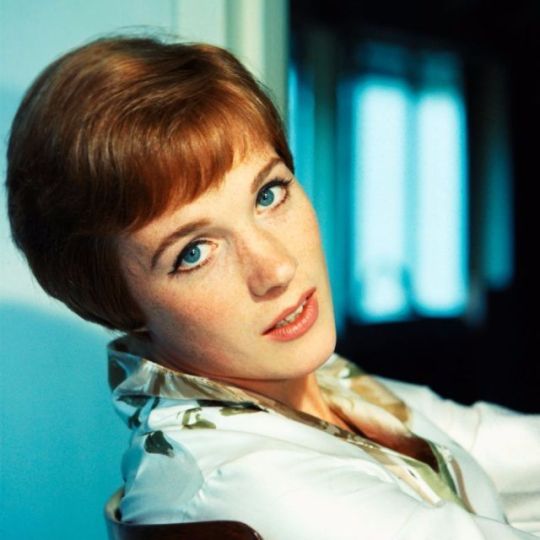
497 notes
·
View notes
Text




SAMSON AND THE PHILISTINES /1863/ by CARL BLOCH
This painting is a depiction of the scenes after capture. Samson was a man of great physical strength, famous for his battles against the Philistines oppressing the Israelites. He is shown here at a mill, symbolizing his fall from grace and the loss of his strength, which had previously been tied to his rather long and uncut hair.
Samson's hair symbolized his covenant with God; and as a result, their cutting means betrayal and ultimately Samson's loss of divine favor. The Philistines, brutish captors, signify oppression and, by this, the struggle against Israelite freedom.
In this painting, Bloch employs an acutely dynamic composition where the muscular figure of Samson contrasts with the surrounding figures, featuring his physicality and the tragedy of his situation. The composition is so full of movement: with Samson as the central figure, the symbol of strength and defiance against the Philistines, who are depicted in various poses of aggression and astonishment.
The characters are dressed in historically inspired clothing that reflects the ancient Near Eastern theme. The attention of Bloch does indeed seem to center on the details of the Philistines' garments and architecture, highlighting their status as a warrior society in opposition to the Israelites.
157 notes
·
View notes
Photo
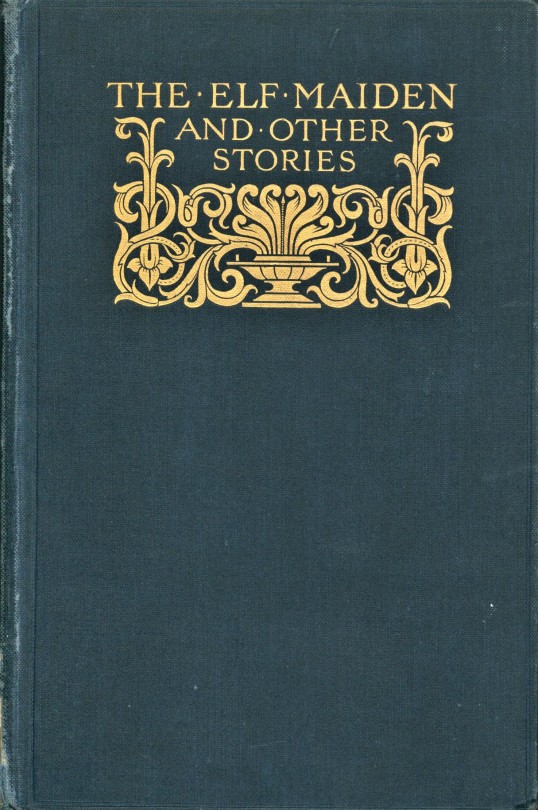

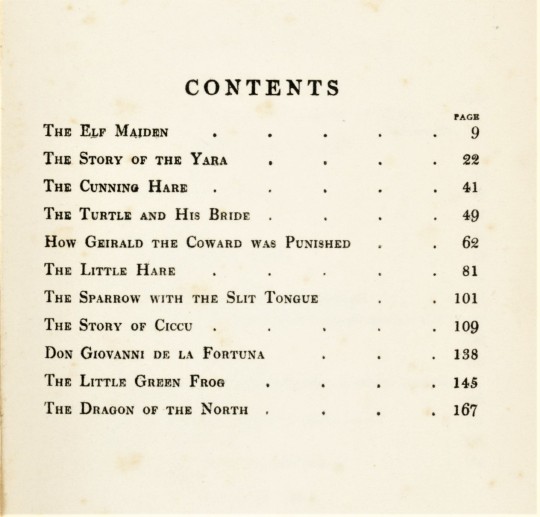

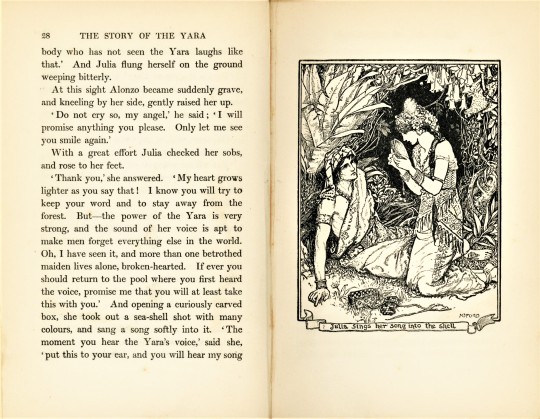


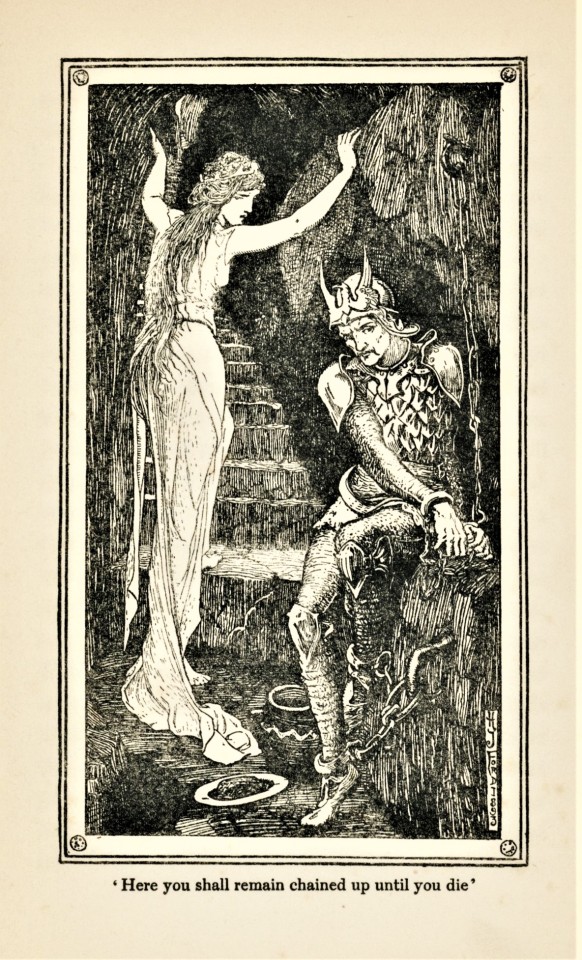
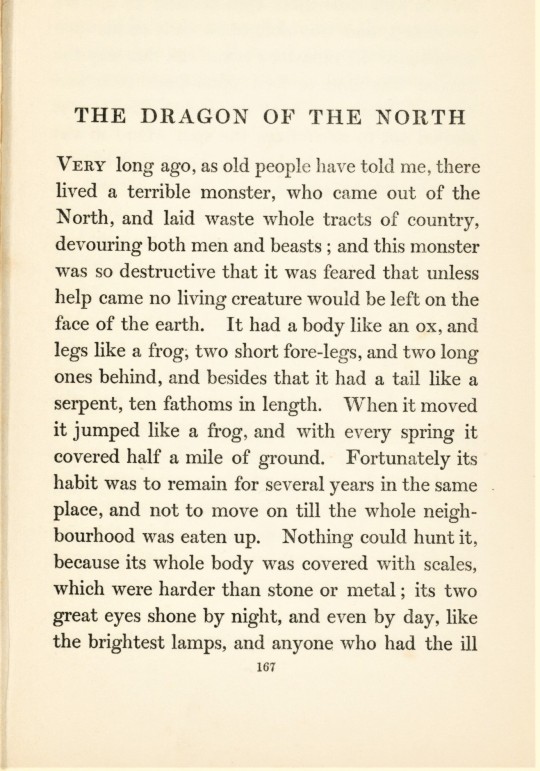

Andrew Lang Fairy Stories
With this semester - and my internship - coming to a close, I wanted to hop back into my wheelhouse for the remainder of my time in Special Collections.
The Elf Maiden: And Other Stories is a collection of eleven tales edited by Scottish poet and novelist Andrew Lang (1844-1912) and illustrated by Henry J. Ford (1860-1941). The book was first published in London and New York by Longmans, Green, & Co. in 1906. The stories in this edition first appeared in three of Lang’s popular “Coloured" Fairy Books: The Yellow Fairy Book (1894), The Pink Fairy Book (1897), and the The Brown Fairy Book (1904). Lang’s Fairy Books were a series of 24 children’s fairy tales, the most popular being the 12 Coloured" Fairy Books, that Lang’s wife, Leonora Blanche Alleyne (1851-1933) helped collaborate and translate.
Lang was considered to be one of the most versatile writers of his time. While he was a poet, historian, journalist, and critic, he was best known for his publications on folklore, mythology, and religion. Lang took an interest in folklore at a young age; he read John Ferguson McLennan before going to Oxford and was heavily influenced by Edward Burnett Tylor.
Henry J. Ford was a prolific and successful English artist and illustrator. While he began exhibiting with historically-themed paintings and beautiful landscapes at the Royal Academy of Art in 1982, it was his contributions to illustrated books that raised him to fame. I was excited to find that he was most famous for the illustrations he provided for Lang’s popular Fairy Books, which captivated an entire generation of children in Britain; these books saw translations and republications during the 1880’s and 1890’s.
View more posts on books by Andrew Lang.
View more posts on fairy tales.
View more posts from our Historical Curriculum Collection.
-- Elizabeth V., Special Collections Undergraduate Writing Intern
#Fairy Tales#Andrew Lang#The Elf Maiden#Henry J. Ford#Longmans Green & Co.#Lang's Fairy Books#Andrew Lang's“Coloured" Fairy Books#folktales#children's books#Historical Curriculum Collection#Elizabeth V.
673 notes
·
View notes
Text
Artnet: Saint Sebastian, The Gay Icon


Saint Sebastian by Guido Reni (left) and El Greco (right).
Despite Saint Sebastian’s popularity in art history, the details of his life are sparingly few. Saint Sebastian is venerated as an early Christian martyr and a saint by the Catholic and Orthodox churches and, according to fifth-century hagiography, during the Diocletian Persecution of Christians Sebastian, a member of the Praetorian Guard, was sentenced to death by the reining pagan Emperor Diocletian for espousing the teachings of Christianity.
He was tied to a tree and soldiers shot him with arrows, but according to Christian lore, Saint Sebastian miraculously survived, having been rescued and healed by Saint Irene of Rome. This scene of affliction and survival would become a popular artistic theme as early as medieval times, only growing more common in 16th- and 17th-century European painting.
Sebastian’s actual martyrdom, however, came after this initial assault. Having recovered, the saint attempted to confront the Diocletian face-to-face about his persecution of Christians. Guards clubbed the saint to death and his body was dumped into a sewer, only to be later recovered by Saint Lucy and buried in a Roman catacomb, where his remains are still today enshrined at the Basilica of St. Sebastian Outside the Walls.
Throughout the centuries, Saint Sebastian’s myth and legacy have shifted with cultural interests. During medieval times, Saint Sebastian was embraced as a patron of divine protection and culturally aligned with the god Apollo, resulting in the saint’s depiction as a beautiful and youthful young man (though often clad in armor, in keeping with his life as a soldier). With the emergence of the Black Death, however, his likeness shifted to one of a grizzled older man, more aligned with his historical age. His popularity as a protective intercessor against disease grew, however, and with it, his return to youthful attractiveness.
By the dawn of the Renaissance, artists were emulating prototypes of masculinity associated with the Greek world, and Saint Sebastian transformed into a figure of ephebic beauty—adolescent, lithe, idealized in form, and often covered only by a loin cloth. These images showed the saint, not in his actual moment of martyrdom, but in a more poetic moment of torture by arrows. Indeed, these Renaissance and Baroque depictions are rooted in the Catholic teachings about the permeability of saints’ bodies and the ecstasy experienced in their communion with the divine.
In the modern era, the popularization of Saint Sebastian as an icon in the gay community often leads back to Guido Reni’s Martyrdom of St. Sebastian (c. 1615) arguably the most famous depiction of the saint. Oscar Wilde was known to have adored the work, which is in the collection of the Palazzo Rosso, in Genoa. In fact, Wilde went so far as to adopt the pen name Sebastian while exiled in Paris during the last years of his life.


Yukio Mishima (left) and Sebastien Moura (right) as Saint Sebastian.
Reni’s painting was similarly influential to the famed 20th-century Japanese author Yukio Mishima; in Mishima’s 1949 novel Confessions of a Mask, the book’s adolescent protagonist experiences a homosexual awakening while gazing at the very same painting. The references to the saint didn’t end there—Mishima, who was himself gay, went so far as to pose as Saint Sebastian in a now-infamous photographic portrait, taken not long before the writer’s death by suicide in 1970.
In the visual arts, too, these allusions to the saint have cropped up repeatedly throughout the 20th and 21st centuries. In the 1970s, Italian artist Luigi Ontani staged a provocative photograph of Saint Sebastian as a gay icon. In the 1976 film Sebastiane, filmmaker Derek Jarman engaged with the narrative of the saint to explore ties between sexual and spiritual ecstasy, through a specifically homoerotic lens.
But what about these depictions of Saint Sebastian so resonated with the likes of Wilde and Mishima? Many observers, including Susan Sontag, have noted that Sebastian doesn’t yell out in anguish amid his wounding but endures the torment with an expression caught between pain and pleasure. Sontag called him the “exemplary sufferer.” His head is often flung back or forward rapturously. He conceals the depth of his emotions, experiencing both torments and pleasures privately, a feeling similar to the experience of gay identity for many men in the 20th century (and often to this day).
Others have interpreted the arrows piercing the saint’s body as phallic allusions and disguised references to homosexual sex, while his rope-tied hands can be seen through the lens of sadomasochism. Perhaps most concretely, the story of Saint Sebastian paralleled the experiences and fears of the closeted gay community—when Sebastian’s concealed true (Christian) identity was revealed, he was shunned, tormented, and killed by those in power, a harrowing tale that mirrored the gay experiences of being “outed” throughout modern history.
(Full article)
#saint sebastian#katie white#history#gay history#lgbt history#lgbtq history#art#museum#homoerotic#gay#lgbt#lgbtq#lgbtqia
23 notes
·
View notes
Text
Gushers Tasting Notes
(page 974-979)

John is, once again, coming along in leaps and bounds with his sylladex activities. His array of queuestacks (great band name) looks like a circus tent in the panel overlay. Perhaps John is recalling the embarrassing memory of Cirque du Soleil filing a restraining order against his dad (p.253).
But mostly this update is Gushers themed, so let’s get some important historical context. Gushers were created and marketed by Betty Crocker in 1991, a subsidiary of General Mills. Betty Crocker is a fictional character crafted by the company to be relatable to 1920s housewives, and she also makes Fruit Roll-Ups and Fruit by the Foot, so John needs to be careful.
Gushers were originally made in strawberry and grape flavors, but tropical and watermelon have since become popular. Since the start they’ve been made in the famous hexagonal bipyramid (‘grist’) shape. They’ve always been marketed to kids, as focus group testing showed that younger people liked the product far more, and are known for their weird commercials. From 2005-2009 they’ve run the ‘Gushers Re-Do Your Room’ flash game, where players can rearrange furniture and paint walls in a digital bedroom, and get extra items through codes on Gushers packs . The gushers-grist connection and this game being a simpler Sburb makes this a very unexpected, but possibly intentional, Homestuck intertext. In 2009 Gushers are also running the ‘Beware the Gush’ promotion. They’ve created thirteen pieces of web content, accessed by codes on Gushers packaging and ranging from a fake German TV commercial to a Google Maps tie-in, intended for kids to “gush their friends” – the multimedia aspects of this are also very Homestuck, and I bet John is gushing his friends.
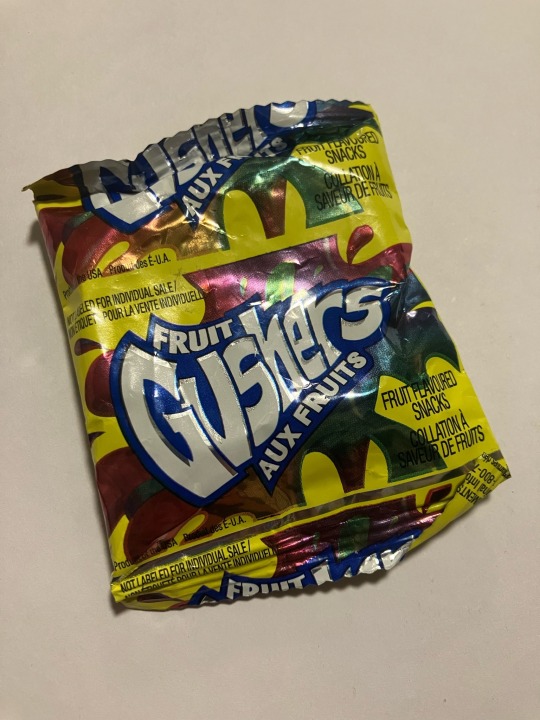

I found a mini packet of Gushers in my craft box, so have done a taste test right now instead of relying on memory. Now my favorite candy is Welch’s fruit snacks blue variety bag, so to me Gushers are a pale imitation of the king, but even so I will taste these Gushers like they are a fine wine.
Appearance. Mass manufacturing takes its toll on the Gushers shape. The barest hint of the bipyramid is visible, but these candies have been squashed and battered into near-unrecognizable blobs.
Flavor diversity. The Gushers packet still includes nine candies, the same as in 1991, although the size of the actual candies has shrunk. I got all four flavors, but four blues and only one orange.
Smell. Gushers of all flavors carry a gentle aroma of wax, reminiscent of a basic candle, which makes me wonder how one would behave if set on fire.
Texture. The outside of a Gusher is a homogeneous squeaking silicone with just enough resistance to provide enrichment. The inside liquid is surprisingly cool, resulting in a pleasant contrast in temperature as well as consistency.
Taste. A lick of the Gusher’s smooth outside reveals The green Gushers are fairly sour, with notes of sherbet, while the red have the overt, juicy sweetness of a maraschino cherry. The common blue Gusher’s notes of pineapple and mango conjure ideas of ‘island time’, and the rare orange Gusher dares to suggest bright, ripe clementine.
After effects. Having recently consumed Gushers, I can feel a faint film of sugar clinging to my tongue. I have not begun tripping or suffered any adverse health effects as of (13.4 minutes post consumption) but I will update this post if this changes.
Overall opinion. As the ancient truism states, ‘Gushers don’t gush, they ooze.’ I found that the oozing center of the Gusher best revealed itself when eating the Gusher in two halves, otherwise, the liquid was too engulfed in its prison to come to the forefront. With this in mind, I award Gushers a 7.5/10. I would be cool with getting these for my birthday.
For a moment John considers taking an extended candy break, and honestly he’s earned it. Unfortunately it seems like John may never eat a Gusher again, because he’s realized for the first time that his arch nemesis the ‘heinous batterwitch’ is the mastermind behind them.
In [S] John: Mental breakdown (p.979), John, looking very smart in his new suit actually, is surrounded by pulsing Gushers and definitely-real flavors: Cool Fructose Monsoon, Kiwi Mango Colonic Rush, Wicked Watermelon Groin Injury, Mixed Berry Social Anxiety Disorder, Neon Green Ecto-Facial Blast, Jammin Sour Diabetic Coma, Wild Cherry Apeshit Apocalypse and Ranch Dressing Rampage. (His new box is Massive Tropical Brain Hemorrhage). He looks concerned, then afeared, then terrified and near-screaming, and eventually comes to the conclusion that ‘this is stupid’, accompanied by record scratch.
I do not think this is stupid. I do think it’s notable that John’s had similar breakdowns before when WV has been commanding him, and John doesn’t respond to anything besides the voice shouting in his head. Watching this I wonder if this is a problem John has dealt with more generally – I think there’s a solid argument that John has depression and/or autism, and freezing in the face of a difficult situation could be linked to either of these.
In terms of this specific trauma, John has had food pushed on him to the point of pain or sickness, I find it very believable that he’d physically struggle to eat anything made by the brand he associates that with, even if he knows it’s irrational. Betty Crocker also represents the ideal of the American housewife, someone who devotes her life to cooking and caring for the house and kids. Someone who, due to the expectations on her, might be considered stuck at home. Or something. Dad is filling that role in John’s life so it’s not quite so gendered in their house, and Betty Crocker the cultural idea could be another reminder of a suburban nuclear-family future that John wants to avoid.
On another note, I’ve noticed a few instances of color in the narrative text recently, which has previously always been black. This first showed up on page 919 where Jade takes over the narrative with her speech, finishing with a red ‘<3!!!!!!!!!!!!!!!!!!!!!!!!!!!!!!’. It happens again on page 934 with the green word ‘ectobiology’, and it’s here on page 978 with John’s ‘WHYYYYYYYYYYYYYYYYY???????????’ in Betty Crocker red. The only earlier examples are page 640 (an embedded image reading ‘SWEET CATCH!’ in green) and page 663 (a link to Sweet Bro & Hella Jeff using red Comic Sans). Based on all this, I wonder if color enters the narrative text when one of the main characters ‘takes over’ and wants to add something. Although these uses don’t correspond to Pesterchum colors, they all seem intended as things the kids are saying or writing, except for ‘ectobiology’, which is so closely associated with John that it’s practically his name.
> John: Search house for non-Crocker branded candy.
21 notes
·
View notes
Text
THIS DAY IN GAY HISTORY
based on: The White Crane Institute's 'Gay Wisdom', Gay Birthdays, Gay For Today, Famous GLBT, glbt-Gay Encylopedia, Today in Gay History, Wikipedia, and more … January 30

January 30, 1965
Historical Context
Winston Churchill's funeral was on a scale befitting his place in history as the prime minister who guided Britain to victory during World War II. He died on January 24, 1965, having lived to the age of 90. The government had been planning extensively for his funeral in the years before his death, and it had to be revised several times as Churchill kept living, leading Lord Mountbatten to remark that "the pallbearers kept dying and Churchill kept living." It became the largest state funeral in history. Representatives from over 120 countries attended the ceremony in London, including Queen Elizabeth II, for whom Churchill was reportedly her favorite prime minister. The funeral itself was watched by 350 million people on television. After his death on January 24, the Queen sent his wife Clementine Churchill a letter saying "The whole world is the poorer by the loss of his many-sided genius while the survival of this country and the sister nations of the Commonwealth, in the face of the greatest danger that has ever threatened them, will be a perpetual memorial to his leadership, his vision and indomitable courage". Vast numbers of dignitaries attended the funeral, including wartime colleagues Dwight D. Eisenhower and Charles de Gaulle as well as several past British prime ministers.


1859 – Edward Martyn was born on this date. (d.1923); Martyn was the first president of Sinn Féin, the Irish republican movement's political party, which he co-founded with Arthur Griffith, serving from 1904 to 1908. He was homosexual and the son of a wealthy Catholic family from Tillyra Castle in County Galway.
A pillar of the Celtic Renaissance, in 1899 Martyn co-founded, with the poet W.B. Yeats, what became Ireland's famous national theater, The Abbey, the Irish Literary Theatre (1899), which was part of the nationalist revival of interest in Ireland's Gaelic literary history. He was a cousin and friend to George Moore, the Irish novelist, though their relationship was often antagonistic.
Violently opposed to British rule in Ireland, he was the center of a court case in 1905 as the result of an off-the-cuff remark in which he stated that "All Irishmen who join the English army ought to be flogged". He died in 1923, unmarried, and after donating his body to science, was buried at his own request in a pauper's grave.
Martyn was outed by his friend George Moore, a prolific novelist, critic, and polemicist, in his three-volume memoir "Hail and Farewell" (published between 1911 and 1914), which entertained its readers but infuriated his former friend. Moore himself said of these memoirs, "Dublin is now divided into two sets; one half is afraid it will be in the book, and the other is afraid that it won't".
Moore, who was attracted to the handsome young Yeats, later fell in love with the celebrated French painter Edouard Manet, who painted three portraits of him. Moore was influenced by the homosexual Oxford critic Walter Pater, and Moore's 1886 work, A Drama in Muslin, contained references to Lesbianism. Moore's 1887 novel, A Mere Accident, also has a homosexual theme and its central character is again based on Martyn.


1889 – Joseph Fielding Smith (d.1964) was presiding patriarch and a general authority of The Church of Jesus Christ of Latter-day Saints (LDS Church) from 1942 until 1946.
Smith was born in Salt Lake City, Utah, the son of a LDS Church apostle. He went to school at the University of Utah. In 1929, he married Ruth Pingree. Together they had 7 children.
At the age of 43, Smith was ordained a high priest and Patriarch to the Church on 8 October 1942 by Church President Heber J. Grant. He served but four years before it was reported by the church that he had requested to be released from his position. His request was granted by Church President George Albert Smith on 6 October 1946, with the church announcing that Smith was released for reasons of "ill health." After Smith's death it was discovered that the patriarch had been involved in a homosexual affair with a 21-year-old U.S. Navy sailor, who was also a Latter-day Saint.
After being released, Smith took his family to Honolulu, Hawaii, where he continued to raise his family. For a time, Smith was not allowed to hold any position in the church, but reportedly was "treated with compassion." In 1957, Smith was again allowed to serve in the church after he had forsaken his homosexual behavior.


1948 – Mahatma Gandhi was assassinated in New Delhi, India by a Hindu religious extremist. Gandhi had ended British rule in India through nonviolent resistance.
"Non-violence is not a garment to be put on and off at will. Its seat is in the heart, and it must be an inseparable part of our very being," he stated in 1926.
His teachings were used during many of the Gay demonstrations of the 60s and 70s and were a major influence on Martin Luther King, through his gay cohort and fellow organizer, Bayard Rustin, who studied with Gandhi and brought the idea of satyagraha (a synthesis of the Sanskrit words Satya (meaning "truth") and Agraha ("insistence", or "holding firmly to") back to the American civil rights movement Today, the Gay Christian group Soulforce continues the uses Gandhi's non violence practices in its demonstrations against Christian churches that discriminate against GLBT people.


1951 – A California appellate court upholds the oral copulation conviction of a man based on police looking into the window of a restroom.


1961 – The New Mexico House of Representatives votes 37-28 in favor of a revised criminal code that includes a repeal of the state's sodomy law. This is the first vote by a U.S. legislative body to repeal a sodomy law. This bill refers to sodomitical relations as "variant sexual practice," something unique in U.S. history.


1981 – Fernando Grostein Andrade, born in São Paulo, is a Brazilian filmmaker, director, producer, screenwriter, director of photography, and media entrepreneur. He is a columnist for VEJA magazine and the newspaper Folha de S. Paulo.
His best-known work is the documentary Quebrando o Tabu, which discusses alternative policies to the War on Drugs and features former Brazilian president Fernando Henrique Cardoso as well as former US presidents Bill Clinton, Jimmy Carter, infectologist Drauzio Varella and writer Paulo Coelho.
In 2012, in partnership with Sun Dog Pictures, owned by British entrepreneur Richard Branson, the documentary was adapted into an international version which was narrated by actor Morgan Freeman. The project has spun off into the largest online platform in defense for human rights, with over 15 million followers between Facebook and Instagram.
Abe, his most recent movie, was selected to the Sundance Film Festival in 2019, and stars Noah Schnapp and Seu Jorge.
Fernando was also selected a Young Global Leader by the World Economic Forum in 2019. He is a founder of Spray Media, which produces content for cinema as well as YouTube and branded content. Other works include the documentary Wandering Heart, with Caetano Veloso, and a number of publicity campaign for big brands such as Nestlé, Coca-Cola, and Volkswagen.
Fernando is the son of PhD urbanist Marta Dora Grostein and journalist Mario Escobar de Andrade, director of Playboy magazine in Brazil, who died in 1991. He is brother, on his mother's side, of the TV host Luciano Huck. He currently resides in Los Angeles with his husband, actor Fernando Siqueira.


2003 – On this date Belgium became the second country in the world to legally recognize same-sex marriage, with some restrictions. According to the Belgian Official Journal, approximately 300 same-sex couples were married between June 2003 and April 2004 (245 in 2003 and 55 in 2004). This constituted 1.2 percent of the total number of marriages in Belgium during that period. Two thirds of the married couples were gay male couples; the remainder were lesbian couples. On 22 July 2005, the Belgian government announced that a total of 2,442 same-sex marriages had taken place in the country since the extension of marriage rights to same-sex couples two and a half years earlier.


12 notes
·
View notes
Text
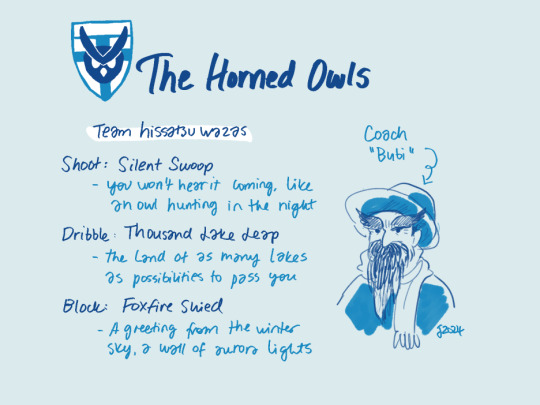
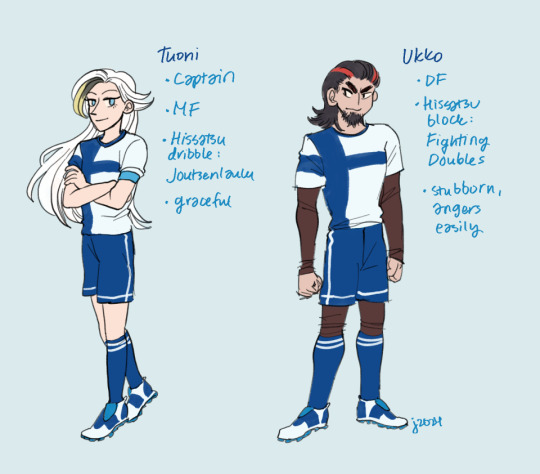
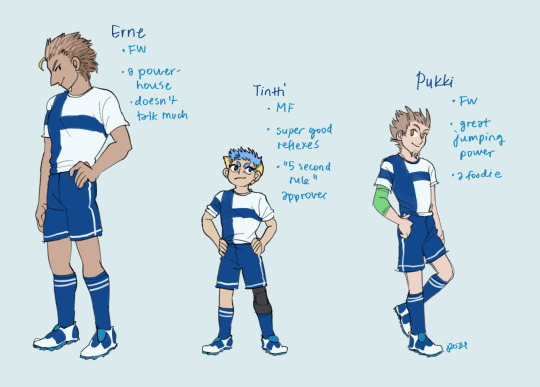
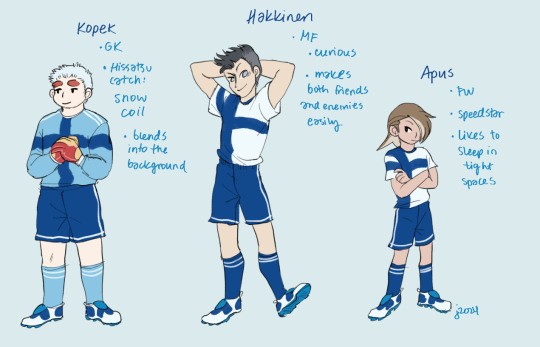
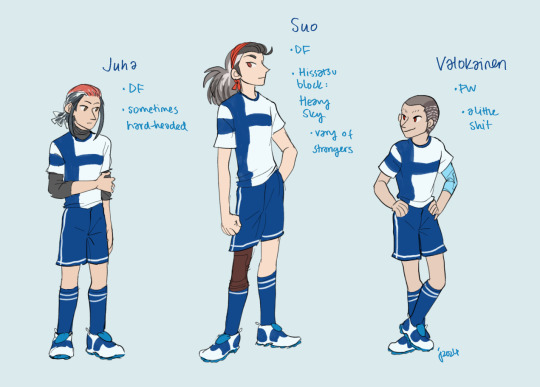
here it is - a fan design for the finnish national team in i11 universe!
I tried to add as many references to birds and finland as I could, and I'll put them under a cut if someone's interested!
general team notes:
our actual national soccer team is named Huuhkajat (the horned owls) after a horned owl that one day randomly started to live in the team's home stadium building - hence the team name and bird theme
that owl got named Bubi, and this team's coach is based on him
general team hissatsu are themed after owls or famous finnish things
all the players are based on the official(?) regional birds
Tuoni:
based on a whooper swan (laulujoutsen), which is the national bird (captain status)
hissatsu is named after a famous finnish song (literal translation: a swan song)
name comes from the swan of Tuoni; a swan that swims in the river to afterlife in Kalevala, and anyone who harms it will die
Ukko
based on a wood grouse (metso)
hissatsu is a reference to a famous painting "Taistelevat metsot" which decipts two grouses battling
name means an older man or a guy, and the male bird is also called "ukkometso"
Erne
based on a white-tailed eagle (merikotka)
name is from the first finnish-built space craft part, and the symbol of the project was a white-tailed eagle
Tintti
based on a blue tit (sinitiainen)
"tintti" is a general nickname for tits (the birds), but also the finnish name for Tintin
Pukki
based on Teemu Pukki, probs the most famous finnish soccer player
and his last name literally means a goat (vuohipukki)
that's all
Kopek
based on a willow ptarmigan (riekko)
most grouses in northern finland make a coil/a nest in the snow for warmth and safety from predators, and his hissatsu is directly borrowed from that
name is literally the sound the bird makes (kopek-kopek-kopek..)
Hakkinen
based on a western jackdaw (naakka)
name is an historical name for the bird, and Häkkinen is a common family name here
Apus
based on a common swift (tervapääsky)
name comes from the latin name (apus apus)
Juha
based on a white-backed woodpecker (valkoselkätikka)
name is.... based on a teacher I had, who was called both Juha and literally a woodpecker.... (this is an inside thing for just me sorry)
Suo
based on a common crane
hissatsu comes from an old belief of cranes carrying the weight of the sky, and they're the most notable species that fly in wedges
name means literally a swamp, which has been the best place to spot cranes here
Valokainen
based on a black-throated loon (kuikka)
name is from an old finnish poem singer, Elessei Valokainen. A loon is in an important role in the earth-diver myth that tells the creation of the world, and Valokainen's story of it from 1908 has been recorded
I also forgot to wrote it in the image but want to mention, these birds have the most iconic cry on summer lakeside evenings, so Valokainen has a laugh that kinda sounds like that
#inazuma eleven#whooo boy this was a fun bunch!!#I also learned a lot myself about birds and culture lol#suo is my fav bc the crane is my fav bird and I'm biased#own art#original character#inazuma fan team
45 notes
·
View notes
Text

Narcissus
Artist: John William Waterhouse (English, 1849–1917)
Date: 1912
Material: Oil on canvas
Collection: Private collection
Description
John William Waterhouse is very famous for his use of the Pre-Raphaelite style. Most of his pieces express classical mythology, historical subjects, and British poetry. He is known for his great proficiency in oils and watercolors. Narcissus was exhibited at the Royal Academy in 1912.
The exquisite oil painting on canvas displays a woman picking flowers in a field. According to the Greek mythology by Ovid, Narcissus was the son of the river god Cephissus and the nymph Liriope. Narcissus had been promised to live to an old age if only he would not look at his reflection, and so he rejected all women who fell in love with him and would not look at himself. Eventually, he was subdued by Echo, a woman who was deeply hurt by his rejection that she caused the Goddess Nemesis to strike Narcissus that he may look at his reflection in a pool and fall in love with himself. Narcissus then looked at his reflection in the pool till he died.
This story gives origin to the narcissus flower, which grew where Narcissus died. The flower grows almost anywhere but prefers well-drained soil with a sunny or light shade environment. The masterpiece of oil on canvas is set in a beautiful wooded landscape, seemingly with a stream and rocky edges. Wildflowers grow there too, and a young lady is bent picking them. Her countenance is downcast in the flowers. In her other hand, she holds a bunch of already picked flowers. She is dressed in a red dress, perhaps to symbolize love or a burning passion. The flowers she is picking are the narcissus flowers. Waterhouse was always keen to use colours, patterns, and simple objects for symbols of the old mythologies. The Narcissus would be no different. This wonderful work of art brings out his genius with the oils on canvas as he seemingly brings every aspect to life as rich in meaning.
Waterhouse was much influenced and inspired by Greek Mythology and works by Homer, Ovid, Shakespeare, and Keats, among other famous writers and poets from the time. His most common theme from these sources was femme fatale, the woman who ensnares a man. Most of Waterhouse's subjects were women from Greek Mythology, historical or literary texts. Often, he used live models, family, and friends to be his subjects, creating a great mix of the old and new as he used symbolism from the mythologies around current English settings.
#woman#narcissus#greek mythology#mythological painting#mythological art#john william waterhouse#landscape#flowers#trees#orange gown#field#english painter#early 20 century art#mountains#water stream#narcissus flower
15 notes
·
View notes
Text




On October 24th 1796 the artist, David Roberts, was born in Edinburgh.
The son of a shoemaker, who began his career as an apprentice house painter. Roberts was born in Stockbridge, near Edinburgh, and while a boy he was a frequent visitor to Rosslyn Chapel, it’s architecture is a complex fusion of influences from many cultures, and it has been mentioned that it was an immense inspiration to the painter.
At the age of 19, after studying art formally at night, Roberts became foreman of work at Scone Palace for a time. Returning home in search of a new job at the end of the project, he took work as a scenery painter for James Bannister’s circus. Bannister offered him more work, engaging him on a good salary of 25 shillings a week, and for a while Roberts toured the country with the circus.
Through Bannister, Roberts then found work at the Pantheon Theatre in Edinburgh, but when the venture failed, he returned to his trade of house painter and decorator. All the time he was working on the “day job”, he was also practising his sketching and painting, thus developing his fine art skills.
Roberts returned to painting scenery for theatres in Edinburgh and Glasgow, meeting his wife, the actress Margaret McLachlan, at the Theatre Royal in Edinburgh. They had one child, Christine. In the early 1820s he exhibited work at the Fine Arts Institution in Edinburgh, including scenes of the abbeys of Melrose and Dryburgh, which were popular themes due to the immense interest in the history of the Anglo-Scottish border created by the work of Walter Scott.
Roberts was offered work in London, at first by the Coburg Theatre and then the Theatre Royal in Drury Lane. Soon Roberts was commissioned to work for Covent Garden, while also successfully exhibiting at the British Institution. Gothic, romantic and religious themes were still popular in art and Roberts continued to produce paintings of Scottish abbeys and famous European Cathedrals. He developed his range into landscapes and seascapes, as well as Biblical and antiquarian themes, achieving fame though his painting “Departure of the Israelites from Egypt”.
Roberts began to travel in 1832, producing a series of lithographs from his trip to Spain and Morocco. In 1838, he embarked on a tour of Egypt, Nubia, Sinai, Syria and the Holy Land, and his sketches, paintings and lithographs were hugely in demand on his return. Publication of “Sketches in the Holy Land and Syria, 1842–1849” and “Egypt & Nubia” followed, volumes that ran to many editions and are still popular as reprints today.
When he returned to Scotland, the Royal Scottish Academy feted him at a public dinner. As a result of this, Roberts advised the Academy that he was worried about work that was being done at Rosslyn Chapel. One of the major architectural conflicts of the time was between the “romantic school” who viewed overgrown buildings as beautiful in their own right, even seeing the moss and overgrowth as protective, and those who wished to restore and preserve buildings.
When he returned to Scotland, the Royal Scottish Academy feted him at a public dinner. As a result of this, Roberts advised the Academy that he was worried about work that was being done at Rosslyn Chapel. One of the major architectural conflicts of the time was between the “romantic school” who viewed overgrown buildings as beautiful in their own right, even seeing the moss and overgrowth as protective, and those who wished to restore and preserve buildings.
Roberts also visited Italy in the early 1850s, producing a volume of paintings entitled “Italy, Classical, Historical and Picturesque”. The last 15 years of his life were spent carrying out prestigious projects such as the painting of the opening of the Great Exhibition of 1851. He became a member of the Royal Academy and was given the freedom of Edinburgh. His distinctive style and intuitive interpretation of light were emulated by many artists who came after him.
The last time I posted about David Roberts I featured his work in Palestine and Egypt, the pics this time around are his home grown work, the first being a self portrait, next is his apparent inspiration, the Entrance to the Crypt, Rosslyn Chapel, St. Mungo’s Cathedral, Glasgow and Dumbarton Rock.
If you want to see more of his work check out the Royal Academy's site here.https://www.royalacademy.org.uk/art.../name/david-roberts-ra
8 notes
·
View notes
Text

Narcissus
Artist: John William Waterhouse (English, 1849–1917)
Date: 1912
Genre: Mythological Painting
Material: Oil on Canvas
Collection: Private Collection
Description
John William Waterhouse is very famous for his use of the Pre-Raphaelite style. Most of his pieces express classical mythology, historical subjects, and British poetry. He is known for his great proficiency in oils and watercolors. Narcissus was exhibited at the Royal Academy in 1912.
The exquisite oil painting on canvas displays a woman picking flowers in a field. According to the Greek mythology by Ovid, Narcissus was the son of the river god Cephissus and the nymph Liriope. Narcissus had been promised to live to an old age if only he would not look at his reflection, and so he rejected all women who fell in love with him and would not look at himself. Eventually, he was subdued by Echo, a woman who was deeply hurt by his rejection that she caused the Goddess Nemesis to strike Narcissus that he may look at his reflection in a pool and fall in love with himself. Narcissus then looked at his reflection in the pool till he died.
This story gives origin to the narcissus flower, which grew where Narcissus died. The flower grows almost anywhere but prefers well-drained soil with a sunny or light shade environment. The masterpiece of oil on canvas is set in a beautiful wooded landscape, seemingly with a stream and rocky edges. Wildflowers grow there too, and a young lady is bent picking them. Her countenance is downcast in the flowers. In her other hand, she holds a bunch of already picked flowers. She is dressed in a red dress, perhaps to symbolize love or a burning passion. The flowers she is picking are the narcissus flowers. Waterhouse was always keen to use colours, patterns, and simple objects for symbols of the old mythologies. The Narcissus would be no different. This wonderful work of art brings out his genius with the oils on canvas as he seemingly brings every aspect to life as rich in meaning.
Waterhouse was much influenced and inspired by Greek Mythology and works by Homer, Ovid, Shakespeare, and Keats, among other famous writers and poets from the time. His most common theme from these sources was femme fatale, the woman who ensnares a man. Most of Waterhouse's subjects were women from Greek Mythology, historical or literary texts. Often, he used live models, family, and friends to be his subjects, creating a great mix of the old and new as he used symbolism from the mythologies around current English settings.
#woman#narcissus#gathering#mythological painting#john william waterhouse#oil on canvas#landscape#flowers#trees#orange gown#english painter#early 20th century art#mountains#water stream#narcissus flower
7 notes
·
View notes
Text

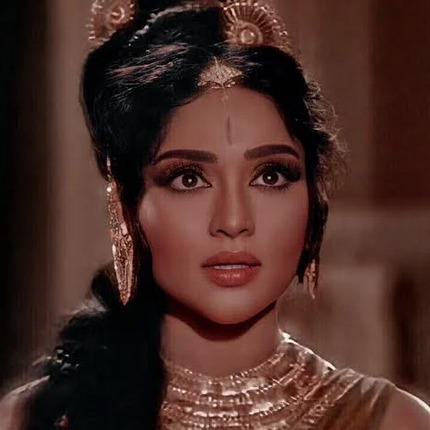
Propaganda
María Félix (Doña Barbara, La Mujer sin Alma, Rio Escondido, La Cucaracha)—Maria Felix is still possibly the most well-known Mexican film actress. She turned down multiple-roles in Hollywood and a contract with Metro-Goldwyn-Meyer in order to take roles in Mexico, France, and Argentine throughout the 1940s, 50s, 60s. She was so famous and so respected as a dramatic actress that she inspired painters, novelists and poets in their own art--she was painted by Diego Rivera, Jose Orozco, Bridget Tichenor. The novelist Carlos Fuentes used her as inspiration for his protagonist in Zona Sagrada. She inspired an entire collection by Hermes. In the late 1960s Cartier made her a custom collection of reptile themed jewels. She considered herself to be powerful challenger of morality and femininity in Mexico & worldwide--she routinely played powerful women in roles with challenging moral choices and free sexuality. But even still, years after he death, she is celebrated with Google Doodles, and appearances in the movie Coco, and holidays for the anniversary of her death.
Vyjayanthimala (Madhumati, Amrapali, Sangam, Devdas)—Strong contender for /the/ OG queen of Indian cinema for over 2 straight decades. Her Filmfare Lifetime Achievement Award came not a moment too soon with 62 movies under her belt. Singer, dancer, actor, and also has the most expressive set of eyes known to man
This is round 5 of the tournament. All other polls in this bracket can be found here. Please reblog with further support of your beloved hot sexy vintage woman.
[additional propaganda submitted under the cut.]
Vyjayanthimala:
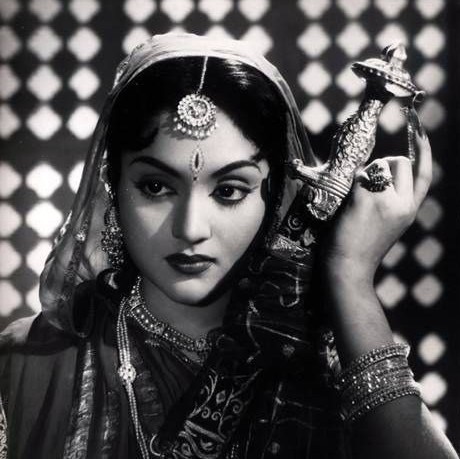
Linked gifset
Linked gifset 2
Linked gifset 3
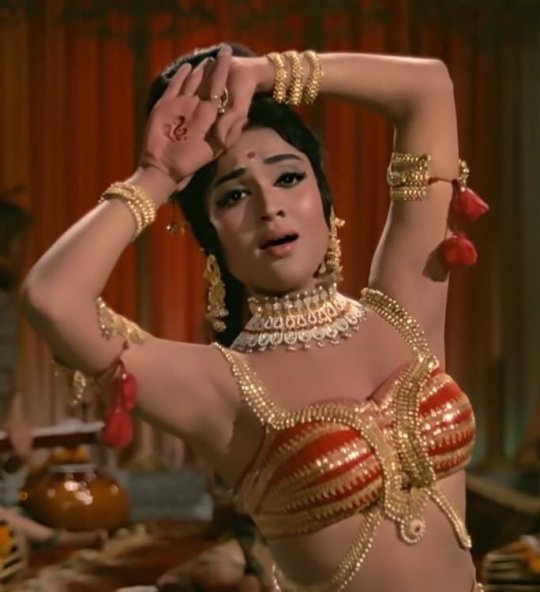
Linked gifset 4
Linked gifset 5
Linked gifset 6

María Félix:
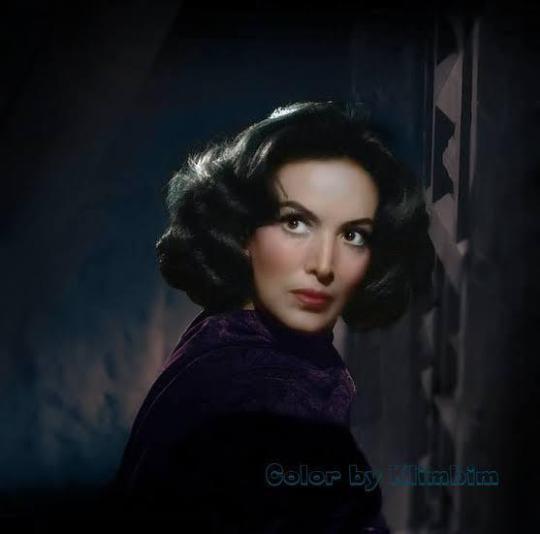
She's Thee Hot Vintage Movie Woman of México. She's absolutely gorgeous and always looks like she's about to step on you. you WILL be thankful if she does.
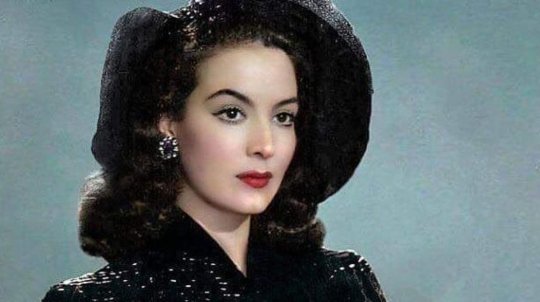
"María Félix is a woman -- such a woman -- with the audacity to defy the ideas machos have constructed of what a woman should be. She's free like the wind, she disperses the clouds, or illuminates them with the lightning flash of her gaze." - Octavio Paz
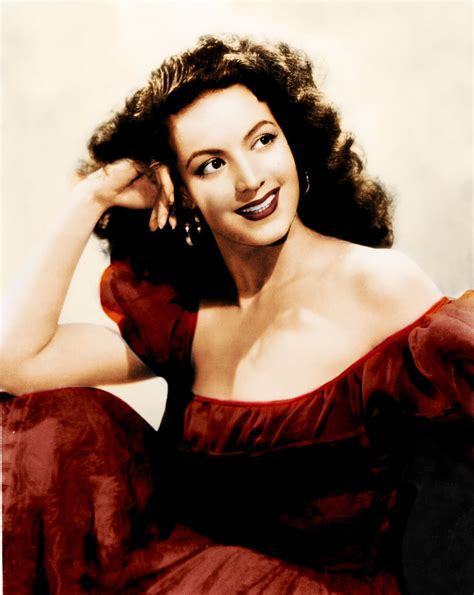

María Félix is one of the most iconic actresses of the Golden Era of Mexican Cinema. La Doña, as she was lovingly nicknamed, only had one son, and when her first marriage ended in divorce her ex-husband stole her only child, so she vowed that one day she’d be more influential than her ex and she’d get her son back. AND SHE DID! María Félix rejected a Hollywood acting role to start her acting career in Mexico on her own terms with El Peñón de las Ánimas (The Rock of Souls) starring alongside actor, and future third husband, Jorge Negrete. She quickly rose to incredible heights both in Mexico and abroad, later on rejecting a Hollywood starring role (Duel in the Sun) as she was already committed to the movie Enamorada at the planned filming time. Of this snubbing she said, quote: “I will never regret saying no to Hollywood, because my career in Europe was focused in [high] quality cinema. [My] india* roles are made in my country, and [my] queen roles are abroad.” (Translator notes: here the “india” role means interpreting a lower-class Mexican woman, usually thought of indigenous/native/mixed descent —which she had interpreted and reinvented throughout her acting career in Mexico— and what abroad was typically considered the Mexican woman stereotype, with the braids, long simple skirts, and sandals. This also references the expectation of her possibly helping Hollywood in perpetuating this stereotype for American audiences that lack the cultural and historical contexts of this type of role which would undermine her own efforts against this type of Mexican stereotypes while working in Europe) She was considered one of the most beautiful women in the world of her time by international magazines like Life, París Match, and Esquire, and was a muse to a vast number of songwriters (including her second husband Agustin Lara,), artists, designers, and writers. Muralist Diego Rivera described her as “a monstrously perfect being. She’s an exemplary being that drives all other human beings to put as much effort as possible to be like her”. Playwriter Jean Cocteau, who worked with her in the Spanish film La Corona Negra (The Black Crown) said the following about her, “María, that woman is so beautiful it hurts”. Haute Couture houses like Dior, Givenchy, Yves Saint Laurent, Balenciaga, Hérmes, among others, designed and dressed her throughout her life. She died on her birthday, April 8, 2002, at 88 years old, in Mexico City. She was celebrated by a parade from her home to the Fine Arts Palace in the the city’s Historic Downtown, where a multitude of people paid tribute to her. Her filmography includes 47 movies from 1942 until 1970, and only two television acting roles in 1970. She has 2 music albums, one recorded with her second husband, Agustín Lara, in 1964 titled La Voz de María y la inspiración de Agustín «The voice of María and the inspiration of Augustín», and her solo album Enamorada «In Love» in 1998. Her bespoke Cartier jewelry is exhibited alongside Elizabeth Taylor’s, Grace Kelly’s and Gloria Swanson’s. In 2018, Film Director Martin Scorsese presented a restored and remastered version of her film Enamorada in the Cannes Classics section of the Cannes Festival and Google dedicated a doodle for her 104th birthday. On august 2023 Barbie added her doll to the Tribute Collection.

337 notes
·
View notes
Text
The Prince of Wayne (Summary)
I admit, I really thought this was a sure loss. I did not expect that this would win when I set the poll.
I don’t know where to start. I also know I asked that poll ages ago, but here it is guys. Finally.
I am still working on A Future With You Summary, at this time of posting, it is at 8k words and I am halfway through the story.
I am honestly surprised this won. And I think it won because everyone had a misconception about what this story is. This happens in modern times in a university. This isn’t about a Prince or anything historical. If that is even the reason why this won.
With that said, I’m not sure where to start.
Firstly, I think you guys have to be aware this is inspired by shows like ‘Meteor Garden’, ‘Boys Over Flowers’ also known as ‘Hana yori Dango’.
Secondly, I’ve only ever seen Meteor Garden though, and my memory of it is blotchy. But anyway, the new girl goes to this elite school and there is this group of famous guys, and the plot is kinda of dumb (unrealistic really), but it was enjoyable as a kid. And the classic scene in Asia where the mother pays the new girl (who fell in love with the leader of said famous group of guys) to leave her son.
Thirdly, those points I mentioned are what inspired me to make this AU. And which is why the title is “The Prince of Wayne”. I struggled with this if I should have had ‘The Princes of Wayne’ because Bruce did adopt a lot of sons. But I figured since Damian is the only one with the family name, by using the singular form it is more targeted to him specifically. Because it is a story more about him (and Raven).
In conclusion, keep those points in mind, I thought it was necessary information for you to know before we get into the actual fic summary. And this is not supposed to be very serious, of course, there are dark themes, but it won’t be the focus, which honestly is pretty glossed over. It’s more on just school life really. It is also like a commentary/ comedy about these kinds of stories. Raven is very self-aware, that is for sure.
This might be the closest to me writing this though, I hope you guys enjoy it.
THE START
The story starts with a new girl named Raven. She got into the most prestigious school in Gotham. Everyone knew that she was just some scholar/sponsored student. And in stories like this, there are a number of people who look down at her for it. She is just the black sheep of this elite school.
And as this kind of story goes, of course, she doesn’t know of the silent rules of the campus. Like for example the off-limits ‘The Sons of Mr. Wayne’ or ‘Sons of Wayne’ or maybe ‘Mr. Wayne’s Princes’, which is why the title is the way it is, it was supposed to be a play on their clique name.
Anyway, Raven didn’t pay much attention to it. Why would she? She wasn’t interested in that kind of stuff and she was there to study. She minded her own business.
Someone was showing her around campus who also kindly explained the Sons of Wayne to her. With the way her tour guide was sharing the information, it seemed like these men were celebrities. It is revealed that Raven doesn’t even know who Bruce Wayne is, and her fellow schoolmate is shocked. This would paint Raven as such a country bumpkin. She doesn’t mind because like always she minds her own business.
Raven’s guide tells her that Richard “Dick” Greyson is in the Business Department doing his master's. Tim Drake is in the IT and/or computer science department of the school. Jason Todd has been shifting around for a while now and can’t seem to stick to one Department, but currently, he is in (honestly forgot this information but maybe) Psychology (he likely heard it was easy and he always goes to what is easy). Damian Wayne is in Chemistry or Biology (I am not so sure too, but more certain with this than Jason’s), the guide would say that she heard Damian was good with computers but she (along with everyone else was) surprised when he didn’t proceed with anything computer related. People believed that he did this so he wouldn’t be overshadowed by Tim. But all of Wayne’s sons were known to be smart. Well, they were sure Jason was if he just tried, but sadly he doesn’t. Raven, if I recall, is a history major because she was compensating for the lack of knowledge she has about history, which will be mentioned later (her origins are pretty dark sadly).
This would be a good way to introduce the title though maybe Raven was asking why they are Bruce Wayne’s kids if only one had the name, Wayne. And she would be told Bruce adopted the others but Damian is Bruce’s biological son, thus he is known as ‘The Prince of Wayne’, perhaps also believed to be the heir apparent because he was directly related to Bruce.
Anyways, moving on, at times she’d see the crowd surrounding one of Bruce Wayne’s sons but she can’t see the said son because of the crowd. She would make commentaries that the school doesn’t seem like school most times especially when these mysterious sons are involved.
In one of those crowd-filled insanity, Raven was running from a crowd and hid on a rooftop and stumbled on a man sleeping. He had black hair and he opened his eyes and groaned, glaring at her. He had green eyes.
This was how Damian Wayne and Raven Roth met.
At first, he thought that she was one of those crazy fan classmates or whatever, but she looked at him like he was a creep. He even told her to get lost because this was his spot and he didn’t want to have to find a new hiding place. She’d scowl because this rooftop isn’t his. And that is how he’d realized she didn’t know him or eventually as they interacted, he’d realise that she didn’t know him.
The rooftop is where they’d meet and eventually become friends.
She would even complain to him about how absurd it is that these schoolmates of hers are obsessed with Bruce's sons. He’d chuckle and listen to her. She’d even rant how the youngest, whatever his name was, skipped classes every time but somehow had top grades. And people like her have to show up to classes or else. Jason, though, was the worst and she’d say how nice it is to have so much money at their disposal.
Eventually, in that space that is where they would fall in love. He fell for her first.
They even share meals or snacks and naps.
But outside of that space, Raven doesn’t see him. She didn’t know though that he started keeping his eye on her.
Damian would notice that Raven was an extremely odder ball than he initially thought.
He’d see Raven sneak out back or somewhere to see her enter a luxurious black and heavily tinted car. Sometimes she just enters to leave, sometimes the car would take her somewhere and the time she’d return would vary.
Eventually, a rumour that she was some mistress to a rich old man appeared. But she minded her business. Damian was not happy with the rumour or the fact that it seemed true. He wanted to ask her about it.
Raven also met this female classmate who seemed to like dressing up to different aesthetics and changing her hair with wigs. The girl was a happy lady whose hair or general aesthetics were never the same the day before. The friend is quite an upbeat and happy girl. Take note of this friend, folks.
At this point, If I recall correctly, Raven would be avoiding Damian which would make him talk to her publicly because he was so annoyed. People would realise that they have formed some kind of relationship with one another. He would also confront her about this ‘older man’ rumour or her as a mistress.
I faintly recall she tried to avoid answering which then frustrated him and made him confess to her. And when I say avoid, she avoided him for days.
The friend (different aesthetics every day) would immediately leave Raven if she sees Damian approaching as if she was scared of Damian at first. Eventually, the friend would stop avoiding Damian but Raven would notice that Damian and the friend would seem to have secret glances at one another.
Then I think Damian and Raven started dating. Raven told him that the car she goes into was the person who helped her go to this school, so in a way, she guessed the rumours weren't wrong, but there was nothing romantic going on with her and that person. Damian just had to trust her. She refused to tell him who that person was. That person was her lifesaver.
Eventually, she would tell Damian who the person is, and it has to start with how she met him (the sponsor).
Raven tells him that she was in rags, running in the streets of Gotham barefoot, escaping from someone. She begged for help from people, but no one wanted anything to do with her. Especially with the rags she had on. She felt hopeless. Then suddenly a man in a suit was before her and asked if she needed help. The first person who looked her in the eyes. He then told her that she could go with him and he’d help her out.
She knew it was stupid to trust a stranger, but anything was better than getting caught from the very place she had just escaped from. She told Damian that she was held captive by some satanic cult, she didn’t want him to know this because she was ashamed. But if Damian had to know who the sponsor is, he also had to understand how they met and how important this sponsor was to her.
She didn’t get any bad vibes from him so she followed him back to his limo.
The sponsor was the one who helped her integrate back into society. He did it very patiently too. This is also why she took up history as her major. She wanted to know more about the world because she was hidden from it for too long. And she would also like to understand why there were people like those who took her.
Raven wasn’t sure why he was being nice, but he would tell her that someone he cared about asked him to, but he couldn’t say who. Her sponsor is a slightly older male, maybe Dick’s age or just 4 years or more older than Raven. He is currently working at his father’s company and is a name that Damian recognized as they are from the same social group. Damian was shocked to know about how Raven lived before escaping and he swore he’d give her everything and the best life that she deserved.
Then I remember that Raven would go with Damian to some high-class party. Where she meets a platinum blonde-haired woman with light blue eyes, and not a single strand of her blonde hair is astray. Her voice sounded familiar but she spoke calmly and evenly, and in an almost indifferent manner. She looked posh and proper.
But the way she talked to Raven it seemed like they were long friends. The blonde then introduced herself as Raven’s friend who’d dress over the top, to Raven’s shock. The friend explained that she comes from an old money family who is quite controlling. As seen in how she is currently dressed and acting. In fact, her identity in school is hidden because she ran from her family and her fiancé was the one who helped her do so. And if her family had it their way, she would have already been married to her childhood friend. The reason she also dresses up differently, aside from experimenting as such clothing would not be allowed by her family, it also serves as a disguise. She would even say that her platinum blonde hair is not natural, but her mother insisted that the palest blonde was the best for her and the family’s image as they were known for that shade of blonde.
Damian also knows her as they grew up together in the same social circle, and as they were of a closer age, were friends too.
Raven’s friend would reveal that the day Raven met her sponsor, she was the one who noticed Raven. The sponsor was Raven’s friend’s fiancée and childhood sweetheart. She had moved to the front when her fiancé went to get Raven at her command. Which was why Raven did not meet her.
She apologized for keeping her identity a secret but she was regularly clothed and was hiding from her parents. She was just thankful that she had a very supportive fiancé.
And now back, to that whole troupe where the mother of the rich male lead gives money to the girlfriend to leave her son.
Raven experienced the same with Talia and Raven is just like: This cannot be happening, this is not like those dramas.
And as I said, this fic is more on comedy, so there will be those exaggerated scenes where it is clearly impossible but Raven is self-aware and comments or snickers about them. Damian too would share with her that this place, especially the university, is weird.
And they’d bond over the weirdness of the school or their world in general. This part might happen while they are becoming friends on the rooftop and can continue on as they get together as a couple.
And I think that is all for this story. It has been quite a while since I made this story idea so I know I missed a few things.
I do faintly remember the confession scene, they were on campus, the sun was setting and Raven was going to go to the black expensive car and Damian ran to her, stopped her, and told her he liked her. And not to go and ask if the rumours were true. I know I cried over it as I thought of the scene, but I don’t remember much of this storyline as I had mentioned at the poll.
Anyway, I hope this rather long summary was worth your time.
If any of you have any questions, even in general, you can always ask me. :)
#otp#damirae#damian wayne#raven#demonbirds#robrae#dcamu#dc#dc comics#teen titans#damian x raven#fanfiction#romance#damian al ghul#modern university or school au#summary#the poll answer you guys asked for#rachel roth#batfam#batbros
33 notes
·
View notes
Note
do you have any books recommendations? 🙏
okay usually i like to know a general vibe for recommendations bc this is INTIMATE!!! and im actually in a weird place in my reading journey where im trying to branch out and try a bunch of different books in a bunch of different genres bc i got lowkey sick of what i was reading all the time so this is all over the place. whatever fuck it. here are some recent ones in no particular order that ive enjoyed OR at the very least found interesting. most of these are pretty famous i'll be real im not breaking the wheel here. under the cut bc she is long
our wives under the sea by julia armfield. was this book good hmm i dont know. was it kind of fucked up and interesting. YES. some of the prose is legitimately sooo gorgeous and the portrait it paints of the central relationship is intimate and oftentimes heartrending i still think about it which is kind of what you want from a story tbh... a really slow plot (kind of nonexistent) thats frankly more about grief than anything. theres some spooky body horror here so beware
slaughterhouse five by kurt vonnegut. shes a classic for a REASON. do you ever pick up a book that is very beloved and famous. and then get genuinely and pleasantly surprised that it actually rules. happened to me. legit kind of life changing and also made me laugh out loud. if you havent read it get on it
the kingdoms by natasha pulley. read this over the summer and i vividly remember sitting in the basement at my job hiding so i could read one more page i was RIVETED!!! its historical fantasy its time travel its amnesia it is. on a boat. basically like what if fucked up gay love and also magic made france win the napoleonic wars would that be crazy or what!!! and it was!! also read some of her other stuff which is VERY similar and it was like. fine to good. but i LOVED this one
carrie by stephen king. read it around halloween and i enjoyed it more than i thought i would ! some category 5 stephen king sexism but its an interesting 200 page scifi novel with epistolary elements and some great characters i can see how it launched his career into the stratosphere... really good one to start off with reading stephen king if you wanna dip a toe in but are wary of the 1000 page doorstop novels. i say give it a try !
demon copperhead by barbara kingsolver. recent pulitzer prize winner. its a retelling of david copperfield with a distinctly southern appalachian lens which im always interested in because i am from southern appalachia and frankly the way we get treated in fiction is wild. like hillbilly cannibals who are illiterate coalminers wild. if i ever catch the guy that wrote hillbilly elegy we are throwing hands. but i liked this ! the region does have a long history of poverty and it was interesting to think about that in conversation to the social commentary with a victorian vibe from david copperfield. i mean this is decidedly unvictorian but that was floating in the back of my head at all times reading it so it made me THINK.
giovanni's room by james baldwin. another one where i was like do you see this shit?? this shit is crazy. and the shit in question is one of the most acclaimed and beloved novels of all time. anyways another life changer get on it.
even as we breathe by annette saunooke clapsaddle. another southern appalachia moment ! this one rings VERY true for me actually, despite being a historical novel... written with a lot of love for the area and made me cry a bit cause i was homesick at the time... great mystery and cool local history. also! one of the better representations of the cherokee people ive seen in fiction. which usually im hesitant to like. pin that as a THE major reason you should read it bc the story is ALSO very good but its a central theme of the novel so i thought i should mention it. plus the author is cherokee so she's coming at it with knowledge and care
in memoriam by alice winn. recommendation from a tumblr mutual so i thought id continue the tradition! read it in literally a day so im fuzzy on the details but its about rich eton style english schoolboys getting their spirits basically destroyed in the trenches of ww1... also a gay love story... lots of poetry very tragic but not overly so and certainly very readable... a competent historical gay romance if thats ur thing youll probably enjoy it
the poppy war by r f kuang. interesting bc it initially feels like a historical fantasy novel with a young protagonist going to a magic school and overcoming the odds slash beating the evil enemy story thats been done one billion times. but it is DEEPLY not that. takes the conventions of the genre and kind of refuses to make them reducible or easy to package. deals with war (read the warnings etc). deals with genocide. deals with race. wrestles with the ethics of all of its characters and comes down with some nuance. kind of a slay
and then here's some all time faves that are just GOOD and im reasonably sure anyone would have a good time with:
jane eyre. i have quoted this enough on this blog cmon. also if youre following me youre probably a fan of fucked up relationships so you should go. be with the OG. fly. like its foundational to the GENRE babyyyy
dracula. yayyyyy epistolary novelssss... another "fun" classic along with dorian gray... read em both they slap
the book thief. took me a year to read. made me cry lots.
daisy jones and the six. look at me look AWAYYY from the amazon series look at ME. this is a fun book. and if you are in a reading slump i frankly HIGHLY recommend it bc it is done in the style of like. a documentary autopsy on a fleetwood mac esque band implosion so its told in 100% dialogue as if they are being interviewed. you can read it in a DAY and its FUN and sometimes they CONTRADICT each other which i LOVE
the queens thief by meghan whalen turner. GOD!!!!! all time. all time. straight relationships in fiction that make you crazyyyyyyy and also genuinely delightful twists at the end of each book i LOVED them. i read them all in the pandemic they slayyyy
howl's moving castle. delightful. if you like a silly time in a fantasy world that makes you laugh a lot i would recommend. also the sequel its fun
any terry pratchet novel thank you goodnight
#rapid fire ones: circe by madeline miller. piranesi by susanna clarke. the underground railroad by colson whitehead. the things they carried#also and i am beign so serious. if you have never read ella enchanted you should. it is fun.#callie speaks#asks#staring down my tbr and waiting for my brain to get better. torture.#next up is house of leaves. lfg.#the tonal whiplash on this list is so funny im realizing. 50% fun fantasy and 50% THE HORRORS OF WAR.
10 notes
·
View notes
Text
A Global Celebration of Heritage and Excellence for Rising rajasthan 2024

Rajasthan, a land of majestic palaces, vibrant culture, and timeless traditions, has long been a beacon of India’s rich history and diverse heritage. But in 2024, the state took its global spotlight to new heights with Rising Rajasthan 2024, a grand event that beautifully intertwined the old and the new — celebrating Rajasthan’s heritage while showcasing its ambitions for the future.
Held in Jaipur, the event marked a defining moment in the state’s journey towards becoming a global hub for investment, culture, and innovation. With the theme of “Heritage and Excellence,” Rising Rajasthan 2024 was not just an exhibition; it was a global celebration that brought together policymakers, business leaders, artists, educators, and cultural ambassadors from across the world to explore opportunities for mutual growth and cross-border collaboration.
A Vision of Rajasthan’s Future Rooted in Tradition
Dr. Rajvardhan Rathore, the State Minister for Sports and Youth Affairs, played a central role in organizing and leading the event. A champion of both tradition and progress, Dr. Rathore’s leadership was evident in the event’s execution, where Rajasthan’s historical treasures were celebrated alongside its futuristic ambitions. Through Rising Rajasthan 2024, he sought to reinforce the message that while Rajasthan cherishes its heritage, it is equally committed to embracing new technologies, sustainability, and global partnerships.
The event opened with a grand inauguration ceremony that blended the old-world charm of Rajasthan with cutting-edge technology. Traditional Rajasthani music and dance performances, adorned in royal costumes, set the stage, followed by a digital showcase highlighting Rajasthan’s development in sectors such as infrastructure, renewable energy, education, and tourism. The juxtaposition of culture and innovation painted a powerful picture of a state that honors its past while confidently advancing toward a brighter future.
Celebrating Rajasthan’s Rich Heritage
Rajasthan’s rich cultural heritage was at the heart of Rising Rajasthan 2024. Known for its royal palaces, fortresses, handicrafts, and vibrant festivals, Rajasthan is a state that continues to captivate the world with its color, history, and art. The event’s focus on heritage celebrated these cultural treasures in a way that showcased their global relevance today.
One of the most captivating highlights was the curated “Rajasthan Heritage Pavilion,” which featured an extensive display of traditional arts and crafts, including the world-famous block printing, blue pottery, tie-and-dye textiles, and intricate jewelry. Visitors from across the globe were able to engage with local artisans, learn about the centuries-old techniques passed down through generations, and appreciate the deep cultural significance behind each creation.
In addition to crafts, Rajasthan’s architectural marvels were given due recognition. A series of digital installations highlighted the state’s iconic landmarks, such as the Amber Fort, City Palace, and the Jantar Mantar, all while promoting the preservation of heritage through sustainable tourism practices.
Global Conversations on Innovation and Excellence
While Rajasthan’s heritage was a central theme, the event also brought a powerful emphasis on excellence and innovation. Rising Rajasthan 2024 served as a platform for global dialogues on the future of technology, sustainability, education, and business.
Among the prominent sessions were panel discussions featuring experts from industries like renewable energy, smart cities, digital transformation, and urban planning. These discussions focused on how Rajasthan could build on its traditional strengths — such as craftsmanship and tourism — while embracing new technologies in sectors like clean energy, artificial intelligence, and digital innovation.
Key speakers from international organizations, such as the United Nations, World Bank, and global companies, spoke about how Rajasthan could become a model for sustainable development. Dr. Rathore highlighted in his address, “The key to Rajasthan’s success lies in leveraging its heritage as a catalyst for innovation. By preserving our traditions and simultaneously embracing the technologies of tomorrow, we can create a sustainable, prosperous future for all.”
Cultural Diplomacy: Rajasthan’s Role on the Global Stage
Perhaps one of the most exciting aspects of Rising Rajasthan 2024 was its role in strengthening international ties. The event attracted a high-profile list of international delegates, ambassadors, and dignitaries, all eager to explore the immense opportunities in Rajasthan. Notably, delegations from Saudi Arabia, Denmark, Japan, and the UAE were in attendance, signaling growing global interest in the state’s development.
For Rajasthan, this was an opportunity to showcase its diverse strengths in sectors such as renewable energy, textiles, agriculture, education, and technology. The presence of international dignitaries reinforced the message that Rajasthan is not only a cultural destination but also a fertile ground for global collaboration. Business-to-business meetings were held, creating a platform for networking and forging partnerships that could lead to long-term economic benefits for the state and its partners.
One of the most memorable moments was the cultural exchange session, where Rajasthan’s art and dance performances were shared with international audiences, followed by a showcase of international arts brought by delegates. This session fostered deeper cultural understanding and showcased how the blending of global influences can create an environment of mutual respect and cooperation.
Sustainability at the Core of Rajasthan’s Vision
The 2024 edition of Rising Rajasthan also focused heavily on sustainability, positioning the state as a model for environmentally conscious growth. With Rajasthan’s vast land resources, abundant sunlight, and commitment to green energy, the state is leading India’s renewable energy revolution.
A dedicated sustainability pavilion at the event showcased Rajasthan’s initiatives in solar power, water conservation, and green infrastructure. Panels and discussions focused on how Rajasthan’s innovative energy projects are not just transforming the state, but also offering a scalable model for other regions of India and beyond.
Dr. Rathore emphasized, “Sustainability is not just a goal; it is a core value that will shape Rajasthan’s future. From solar farms to sustainable tourism, we are creating a blueprint for a world where progress and nature go hand in hand.”
The Future of Rajasthan: A Global Vision
As Rising Rajasthan 2024 concluded, the overwhelming sense of optimism was palpable. The event not only highlighted the immense potential of Rajasthan but also reinforced the idea that the state’s future lies in forging strong, mutually beneficial relationships across the globe. Rajasthan’s leadership, innovative spirit, and commitment to preserving its heritage while embracing modernity have made it a beacon for investment, culture, and progress.
With a clear vision for sustainable growth, a rich cultural legacy, and a firm commitment to global collaboration, Rajasthan is poised to make its mark as a global leader in heritage, innovation, and excellence. Rising Rajasthan 2024 was more than just an event; it was a testament to the incredible journey ahead, where tradition and technology come together to create a future that is as inspiring as Rajasthan’s past.
In every corner of Rising Rajasthan 2024, visitors found a perfect balance of heritage and modernity, of tradition and progress. From its cultural exhibitions to its forward-thinking discussions, the event showcased Rajasthan’s potential to shine on the world stage. As the state continues to rise, it stands as a powerful example of how the preservation of heritage and the pursuit of excellence can go hand in hand, lighting the way for future generations of innovation, collaboration, and success.
3 notes
·
View notes